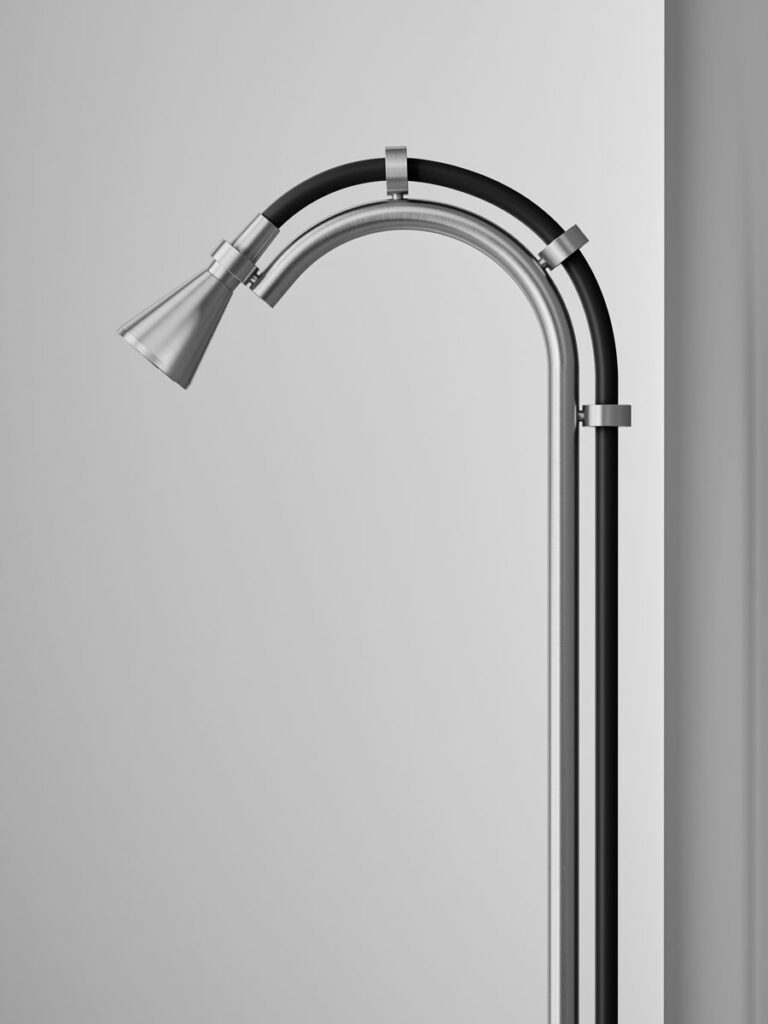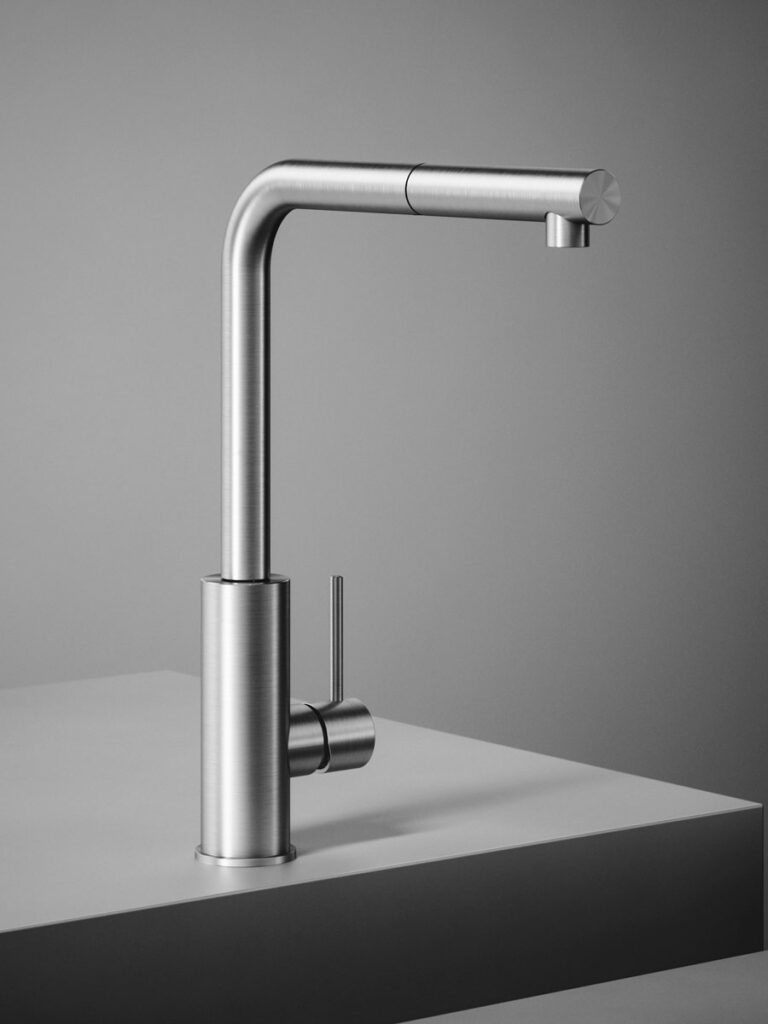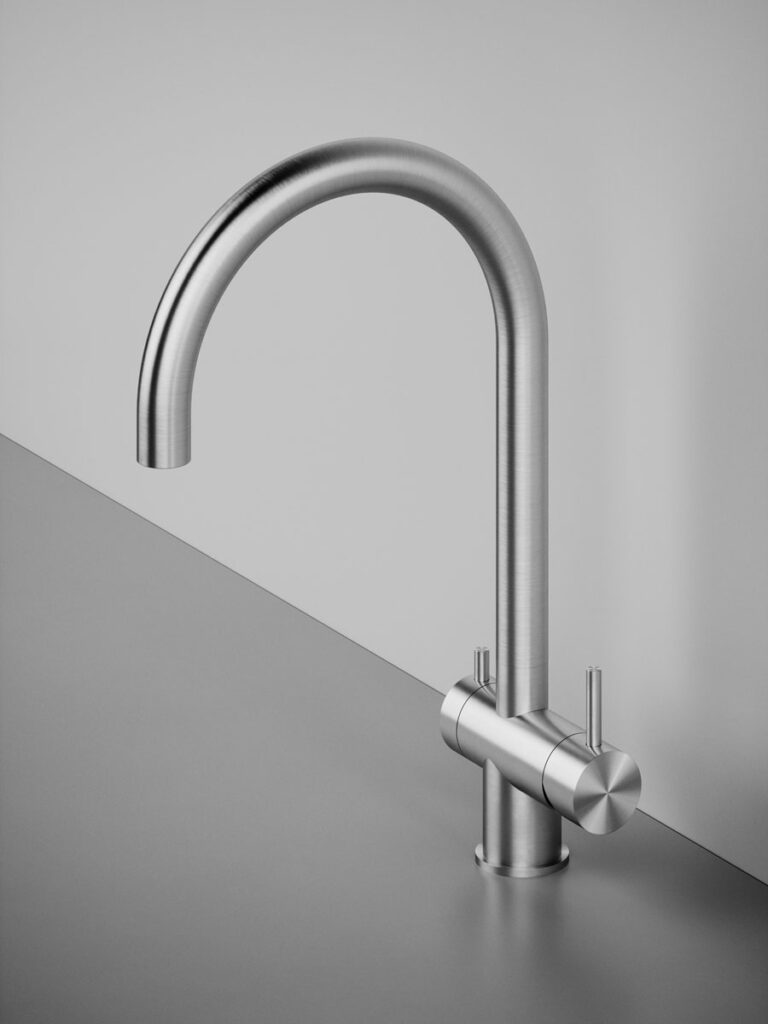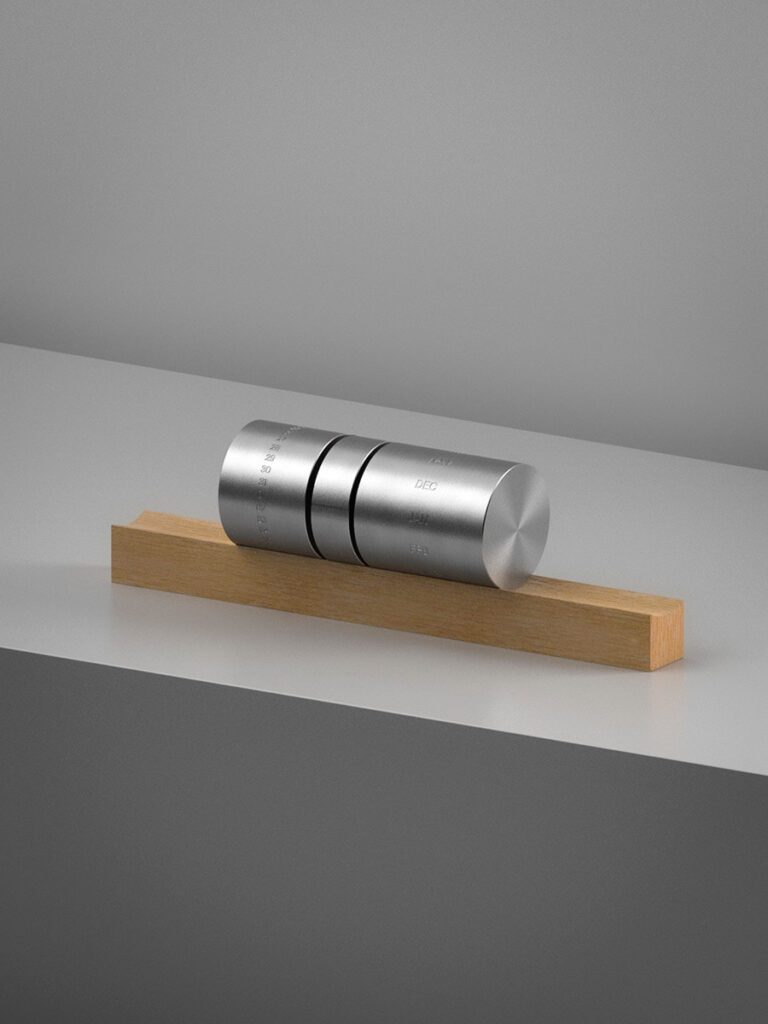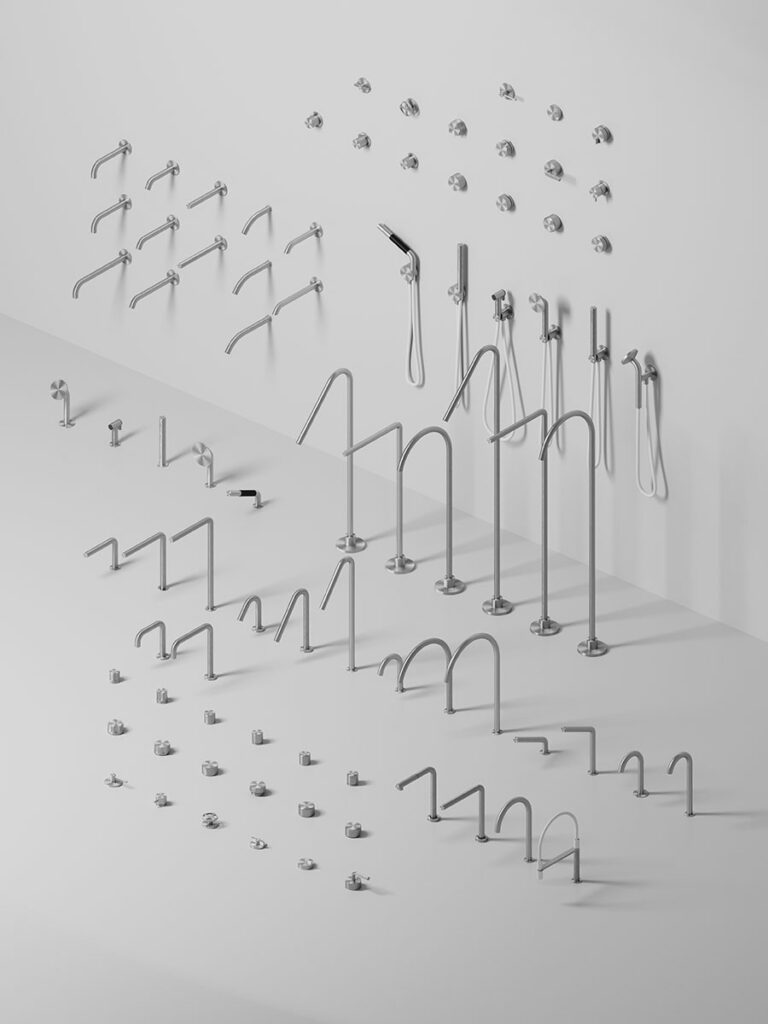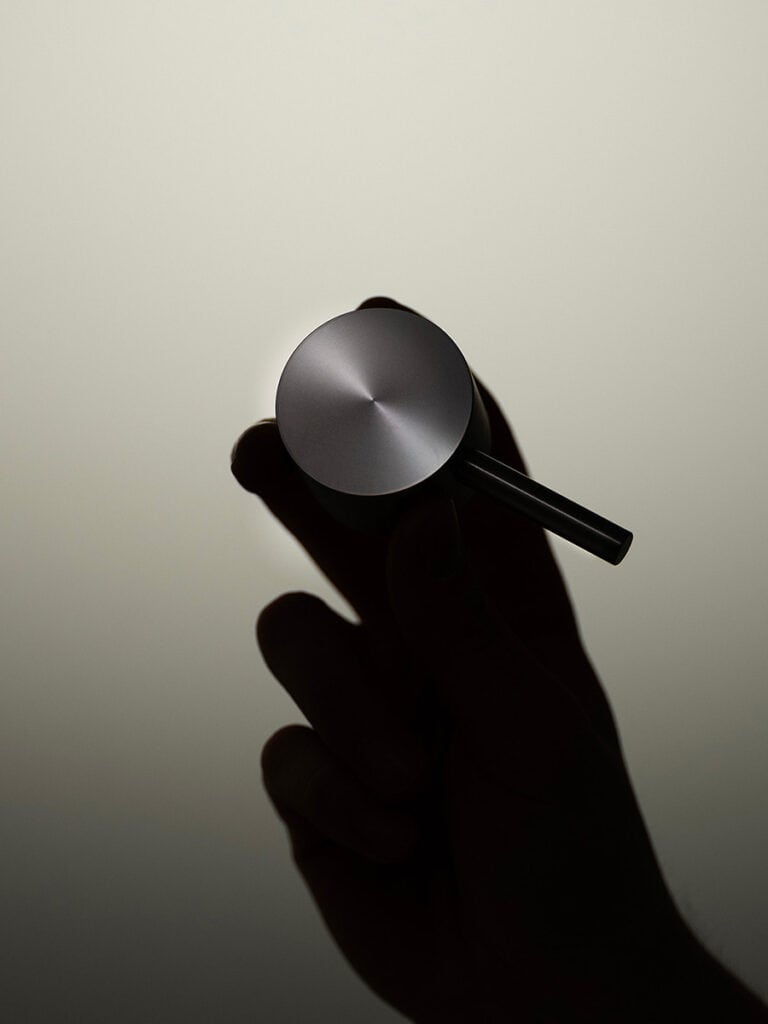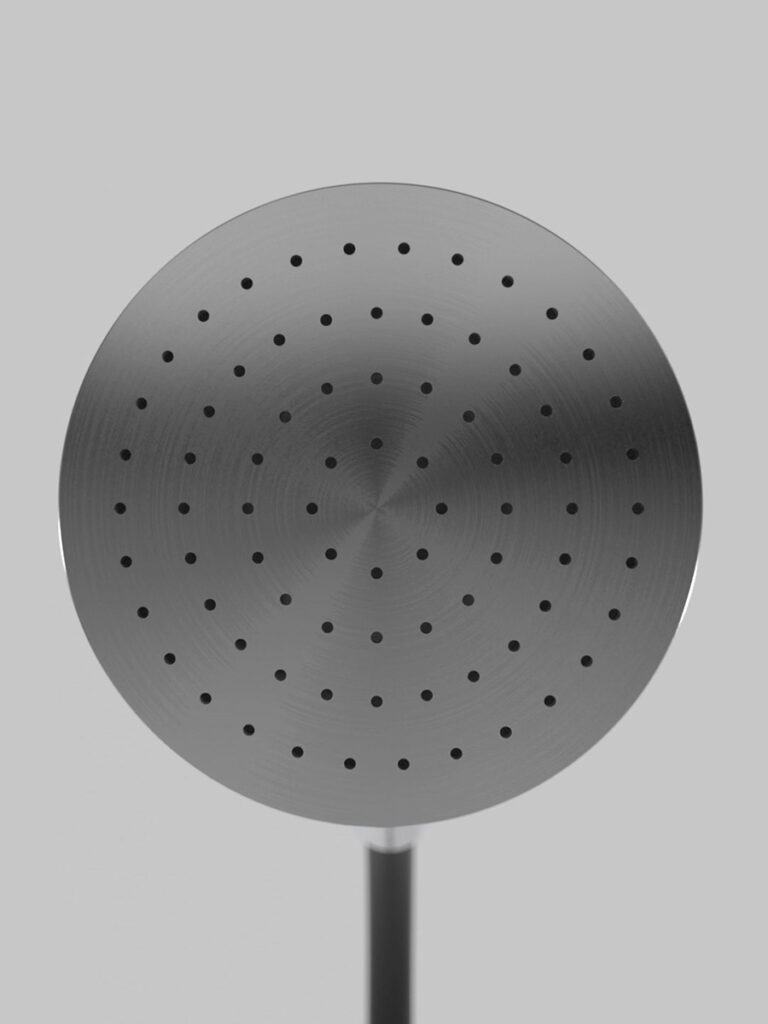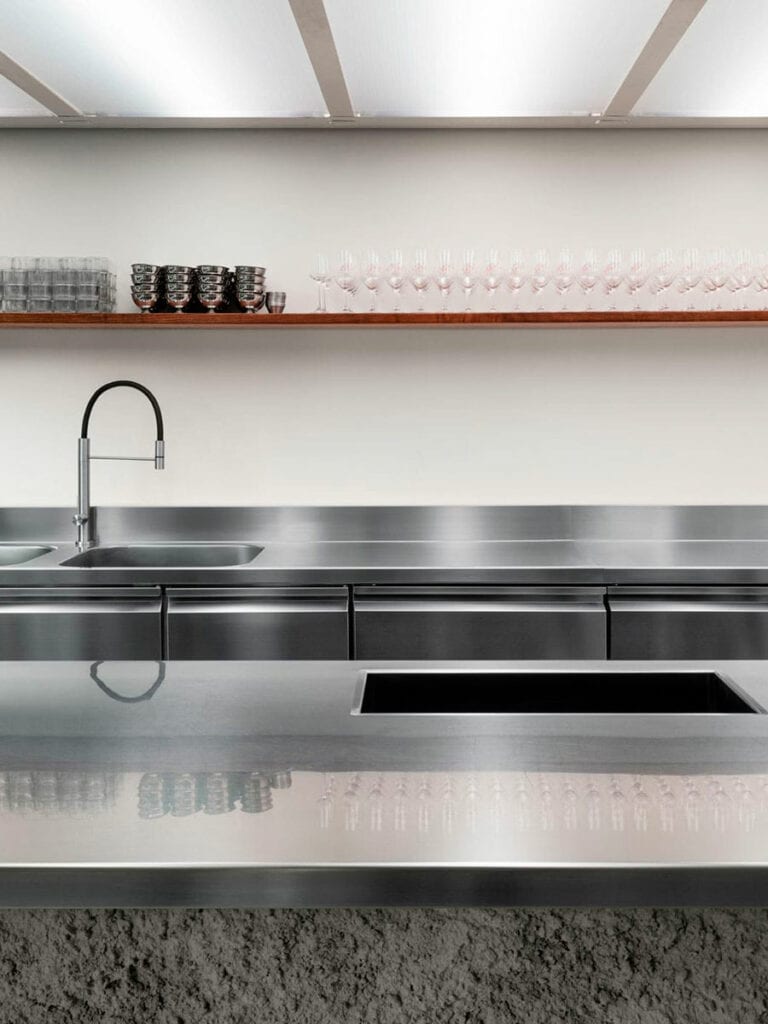Friends: Associates Architecture
Though every space should be designed with particular care for both details and the surrounding environment, this task feels especially relevant for the Italian-South African architectural duo Associates Architecture (Nicolò Galeazzi and Martina Salvaneschi). They seek concision and balance in QuadroDesign faucets and accessories to complement their projects, harmonizing aesthetics with sustainable design.






Interview by Ilaria Sponda
Fluidity is key to your architectural approach. The concept of fluidity focuses on creating a seamless connection between the building and its site, which you appear to have facilitated in your extensive practice. Do you resonate with this concept?
AA: Yes, absolutely. Each of our projects begins with a deep dialogue with the place that hosts it, where the site itself serves as a ‘master’ in every aspect. We like to view our projects as a device that helps reveal and understand a place and its potential.
What interests you about designing around water bodies? Your long-term collaboration with QuadroDesign exemplifies this: from architecture to interior design and details like taps and fittings, your studies and projects coherently merge the technological with the natural.
AA: We are interested in working closely with the element of water and envisioning how this can be expressed within a space. Water bodies are the ‘places’ where we encounter a primordial and fundamental element of our lives, and seen from this perspective, they are ‘magical places.’ In our understanding of architecture, everything is a project; there is no better or worse scale to compare ourselves against: smaller scales feed into larger ones and vice versa. As for the relationship between technology and nature, it is a constant theme in many of our works, where we strive to achieve a balance between these two aspects that may seem opposing but, in our view, must work together and integrate.



What affinities led you to collaborate with QuadroDesign?
AA: QuadroDesign’s faucets and accessories convey a direct, concise, and sincere message, which aligns closely with our architectural philosophy.
What characteristics and narratives do QuadroDesign faucets add to your architecture?
AA: The great merit of every QuadroDesign faucet is that, while it has character and personality, it never overshadows the architectural project. This is why we feel comfortable saying that QuadroDesign ‘accompanies’ the architectural project, seeking the right harmony and balance at all times.
What’s your favorite combination of materials? For instance, your first choice when pairing stainless steel with other materials.
AA: There is no single material that we prefer over another. In our experience, we have experimented with various types of materials based on the places where we work. This variety and difference is a value we uphold because we believe in the importance of finding a method that allows us to respond uniquely to different places and needs, rather than adopting a standardized style. If we had to choose, our first preference when combining stainless steel with other materials would be concrete.








How do you interpret sustainability in your practice?
AA: We prefer to speak about responsibility rather than sustainability. For us, being sustainable means being responsible in every choice made during the design process and in the relationships it fosters, from beginning to end.








Is sustainability a practice learned from the past or a vision for the future? How do aesthetics merge in sustainable design?
AA: We believe that sustainability is a practice to be learned from the past. The past teaches us a lot about responsible ways of interacting with nature and the environments in which we live. For too many years, we have increased the distance between us and nature — yet it is where we come from, what we are made of, and where we are ultimately headed. This is why one of the missions of our office, in the coming years, will be to work on this reconnection between architecture and nature. As far as the bond between aesthetics and sustainable design is concerned, we do not feel able to indicate how it can be done, but we can say with certainty that, in each of our projects, we are constantly working and researching to find a balance between both.






